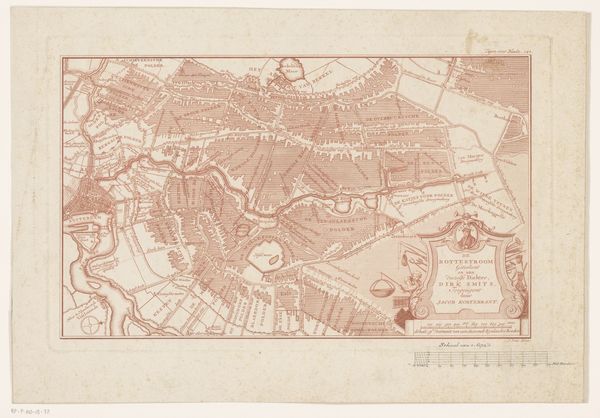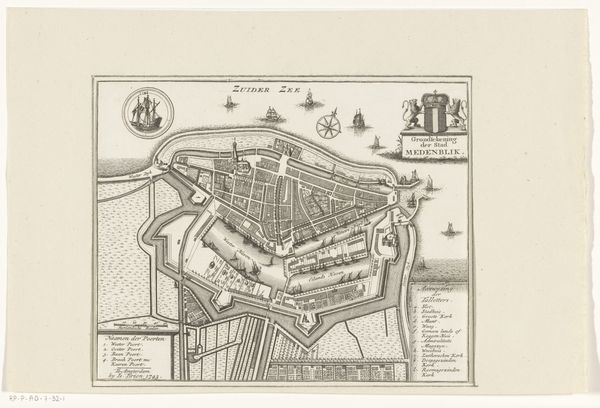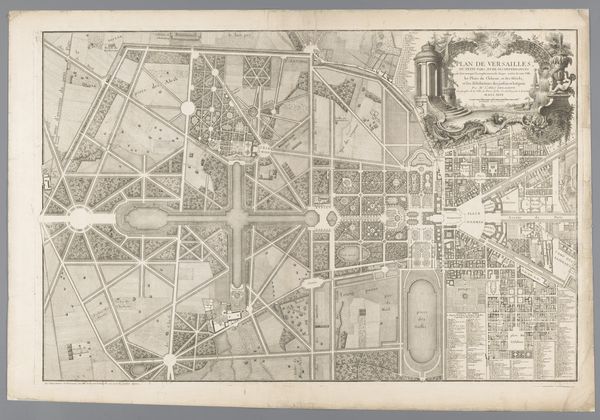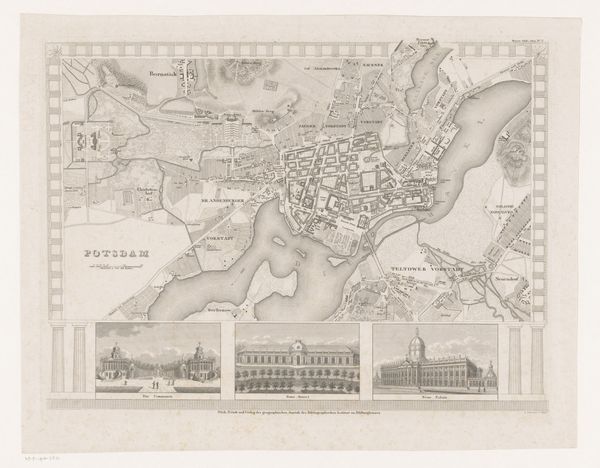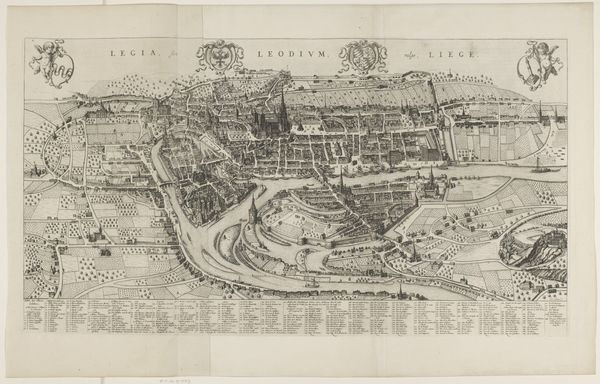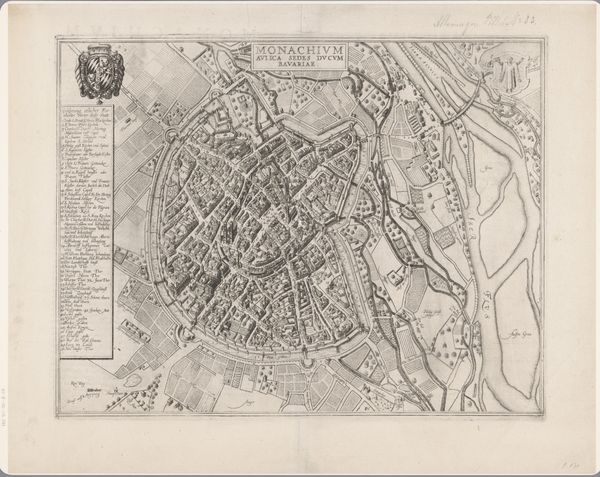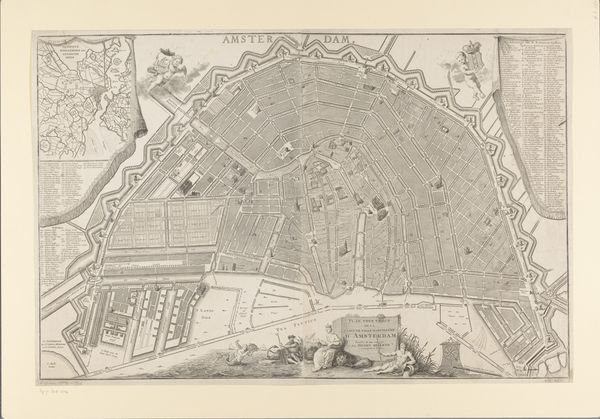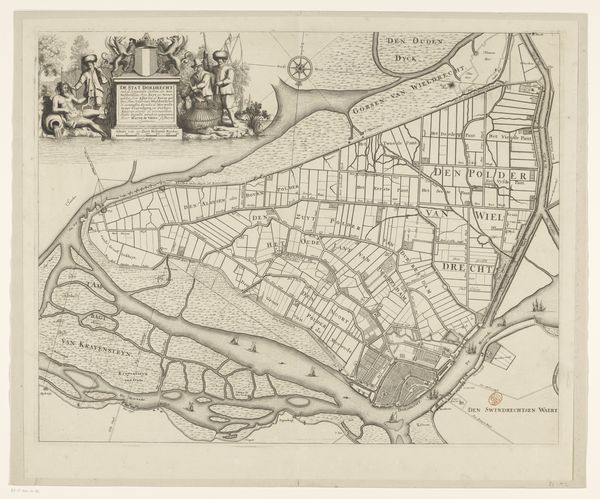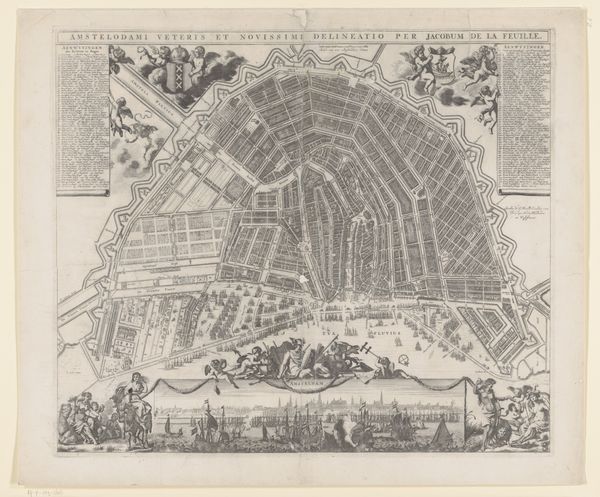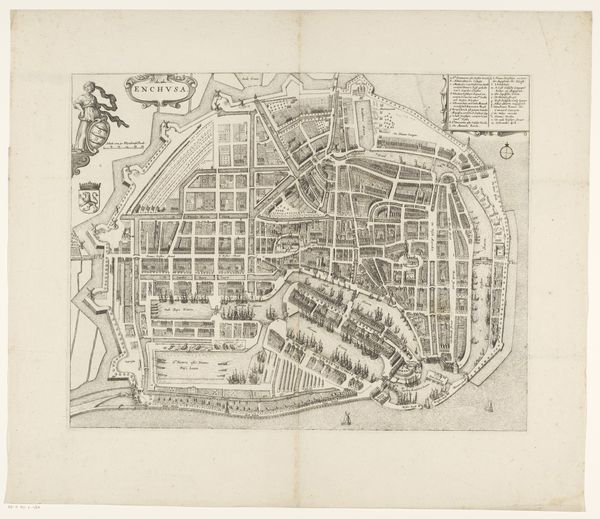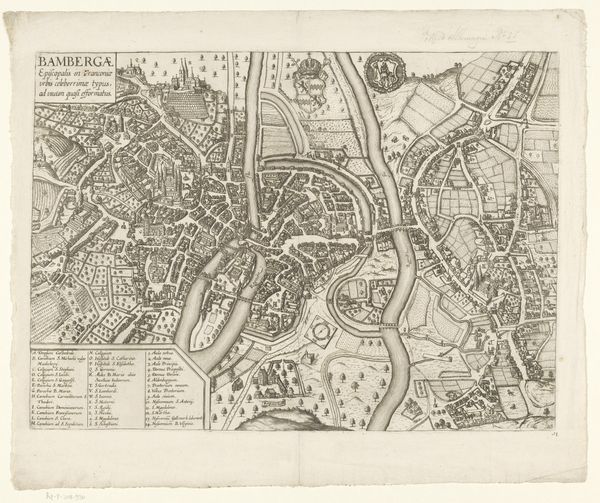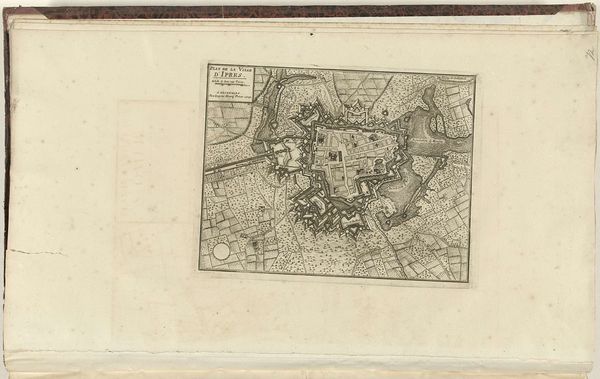
print, etching
# print
#
etching
#
etching
#
geometric
#
cityscape
Dimensions: height 423 mm, width 352 mm
Copyright: Rijks Museum: Open Domain
Curator: This is J. Zipter’s "Plattegrond van Wenen met zes details van gebouwen," or "Map of Vienna with six details of buildings," created in 1833 using etching. The sheer density of information is impressive! What are your first thoughts? Editor: It's fascinating! I’m struck by the level of detail. The artist really shows the city in its full capacity! What interests you about it? Curator: Immediately, my thoughts go to the materials themselves, and how this object circulated. The print, made by etching, implies a certain level of mass production, yes? Consider the social and economic forces at play. Who commissioned it? Who was the intended audience? Were they wealthy people needing orientation, or entrepreneurs considering investments? Editor: That’s a good point! The detailed key suggests practical use, not just aesthetic appreciation. The question is, what about the labor of production? Curator: Precisely! Think of the labor involved in creating this detailed plate, the etcher’s skill, the printer’s work, the distribution networks. The print becomes a commodity, reflecting Vienna's burgeoning capitalist landscape in the 19th century. Each tiny line representing the city's streets and buildings required someone’s time and effort, which in turn served a function within an established social hierarchy. Editor: So you are saying it is not just a pretty map, but a window into 1833 Vienna’s economy. Are there particular architectural structures within the images, as a reflection of this material aspect? Curator: Consider also the chosen buildings in the details around the central map: administrative, cultural, religious...They represented social authority, reflecting the social values imposed by that environment. A materialist perspective invites us to dig beneath the surface to consider production, consumption, and how they reinforced specific power dynamics in Vienna. Editor: I never thought about a map having a social message like that before, thinking about what and how it was produced, circulated, and consumed. Curator: Precisely! It reveals more about society’s intricate network, not just locations, than what is initially observed.
Comments
No comments
Be the first to comment and join the conversation on the ultimate creative platform.

